OpenAI Acquires Windsurf: Are Domestic AI Programming Players Ready for the Shift?
![]() 05/07 2025
05/07 2025
![]() 405
405
The ultimate aspiration of AI programming assistants lies in the creation of an "AI-native IDE".
The May Day holiday has just concluded, and OpenAI has made two significant announcements.
On the morning of May 6, Beijing time, OpenAI declared its commitment to forgo a for-profit transformation and continue operating as a nonprofit organization overseeing and controlling for-profit entities. Concurrently, the original for-profit limited liability company will transform into a "public benefit corporation" (PBC, which can still maintain a profit-seeking status) with an aligned mission.
Meanwhile, a Bloomberg report on the morning of May 6 revealed that OpenAI has agreed to acquire Windsurf, a developer of AI programming assistants, for approximately $3 billion (roughly RMB 21.8 billion). While the impact of the "organizational transformation" is predominantly medium to long-term, this acquisition could significantly influence OpenAI's present and future.
What does OpenAI aim to achieve by acquiring Windsurf?
Among the myriad directions for generative AI, AI programming has always been a unique field, often considered the first killer application scenario. This is not only due to its foundational nature but also because the programmer community is keenly receptive to and embraces new technologies.
According to data released by Microsoft this year, GitHub Copilot boasts over 15 million users, a fourfold increase from the previous year. Additionally, GitHub Copilot's annualized recurring revenue (ARR) reached $300 million in Microsoft's July 2022 financial report, accounting for 40% of GitHub's overall revenue growth.
OpenAI cannot afford to miss out, and the question is whether to build from scratch or acquire an existing product. Foreign media reports suggest that OpenAI had considered acquiring Cursor but was rejected and subsequently abandoned the idea due to regulatory pressures.
Windsurf, an AI programming assistant, is no stranger to the scene. It sparked considerable discussion upon its release at the end of last year, perhaps the first significant buzz since Cursor's rise in popularity. Many developers lauded it as the "only AI tool that can compete with Cursor" after trying it out.

Image/ Windsurf
In retrospect, Windsurf has proven to be more than a fleeting trend. Amidst the global competition of AI programming assistants, Windsurf stands as a formidable competitor to GitHub Copilot and Cursor, even surpassing Cursor in AI programming performance.
Just hours before the acquisition news broke, OpenAI released a statement titled "Evolving OpenAI’s Structure," announcing its commitment to maintain control as a nonprofit organization while transforming its for-profit entity into a public benefit corporation, similar to Anthropic (developer of Claude).
Similarly, OpenAI employees, investors, and the nonprofit organization (as the majority shareholder) all hold equity in the public benefit corporation.
However, amidst the current organizational restructuring, OpenAI may need a tangible product anchor more than ever to balance its mission-driven ethos with commercial realities, proving that it is still led by a "nonprofit mission" and has the capability to directly leverage the most lucrative application scenarios through products, not just models.
The culmination of AI programming aims to recreate an AI-native IDE.
With GitHub Copilot already leading the industry and Cursor gaining momentum, why did OpenAI choose Windsurf? If this acquisition is worth $3 billion, what makes Windsurf so valuable?
Firstly, it's essential to clarify that Windsurf is not a newcomer. Its predecessor, Codeium, was well-known in developer circles for GPU virtualization and launched the first version of its AI programming assistant, Codeium, as a plugin in 2023.
However, after renaming itself Windsurf at the end of last year, the company began to depart from the traditional image of a "smart completion tool" and fully embraced a new concept: the AI-native IDE (Integrated Development Environment).
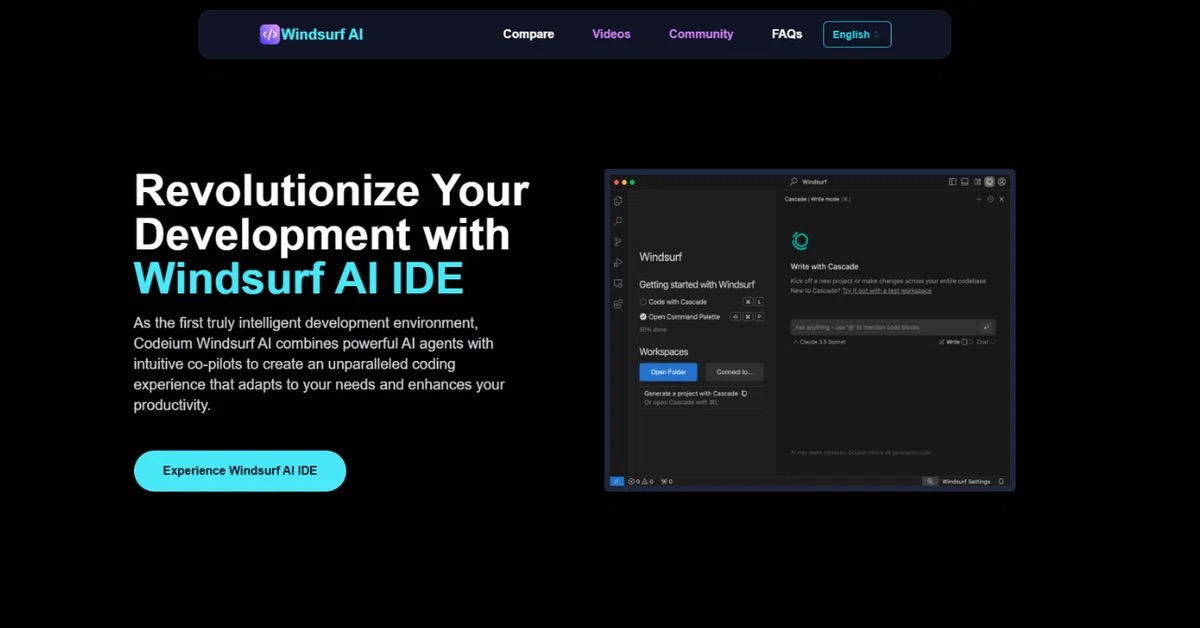
Image/ Windsurf
Windsurf's bet has clearly paid off. Coupled with the deeply integrated AI Agent Cascade, the final AI programming experience has amazed many developers already impacted by Cursor.
It's worth mentioning that most current AI programming assistants, including (Microsoft) GitHub Copilot, (Alibaba) Tongyi Lingma, (Baidu) Wenxin Kuaima, (ByteDance) Doubao MarsCode, etc., are accessed as plugins in mainstream IDEs like VS Code, Xcode, and JetBrains IDE, utilizing AI capabilities to assist in programming.
However, there are a few exceptions, such as Windsurf and (ByteDance) Trae, that are rebuilding AI-native IDEs from scratch. While abandoning mainstream IDEs implies reduced flexibility and migration costs for development habits, this architecture offers stronger context awareness, deeper functional integration, and the ability to cover the entire development workflow.
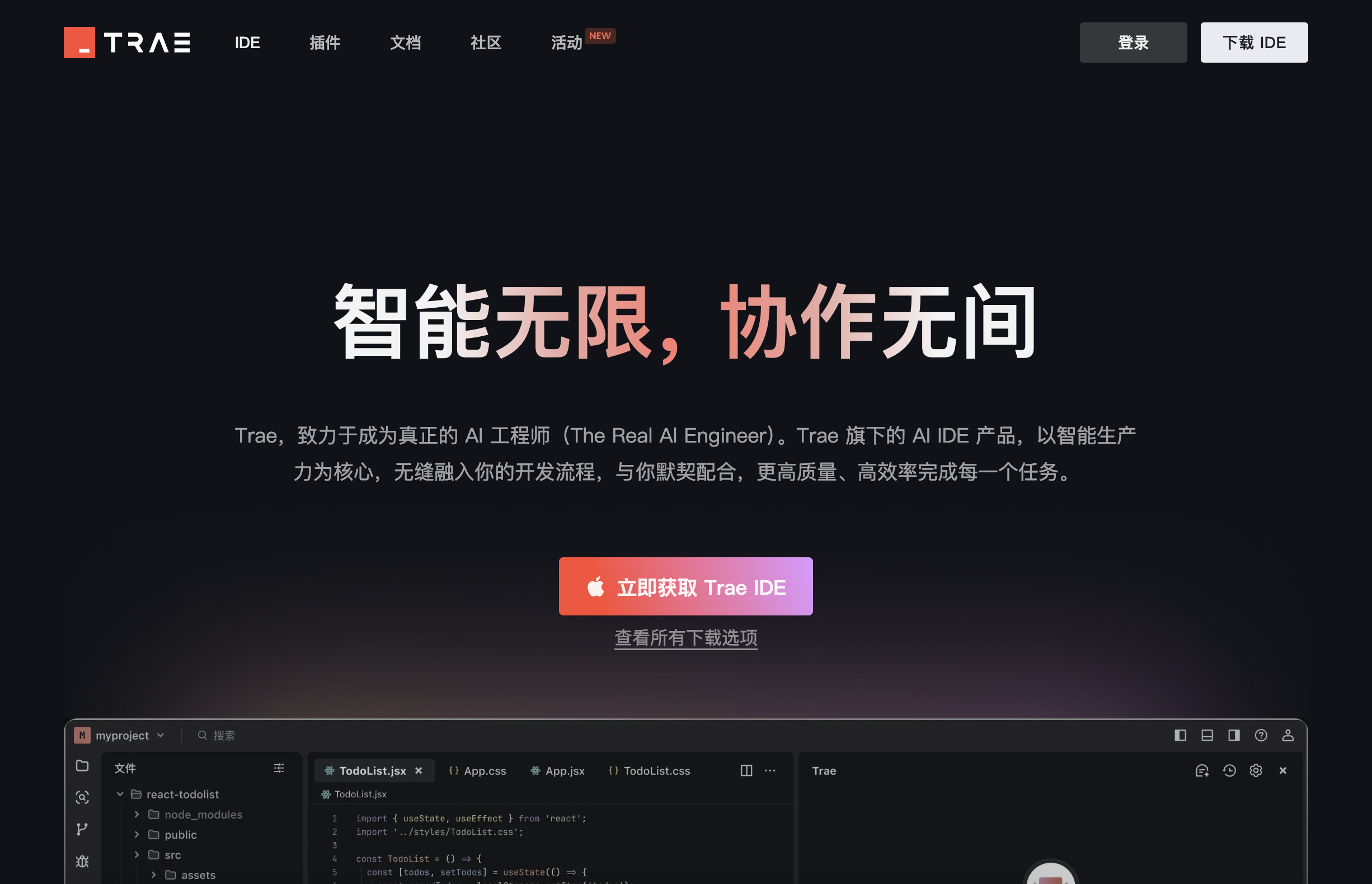
Image/ ByteDance
In essence, it offers a more unrestrained native AI programming capability.
A core component supporting the concept of an AI IDE is the AI programming agent system named Cascade. Unlike AI plugins, Cascade is designed as a system that proactively understands developer intent:
It can perceive project structure and context, identify potential errors in files, and suggest writing functions before you even start. By simply saying "refactor this component," it can automatically navigate between multiple files, modify, test, and return results.
This is not just another plugin but an AI collaborator with operating rights within the IDE.
Beyond the agent itself, Windsurf's interactive design has also garnered much praise in developer circles. Compared to the more engineering-focused interfaces of past IDEs, Windsurf's interface is lighter and aligns closer with the new generation of developers' expectations for "natural language as code." Whether it's code completion, comment generation, test generation, or code navigation, its operation path is shorter, and users can complete most actions without leaving the editing area.
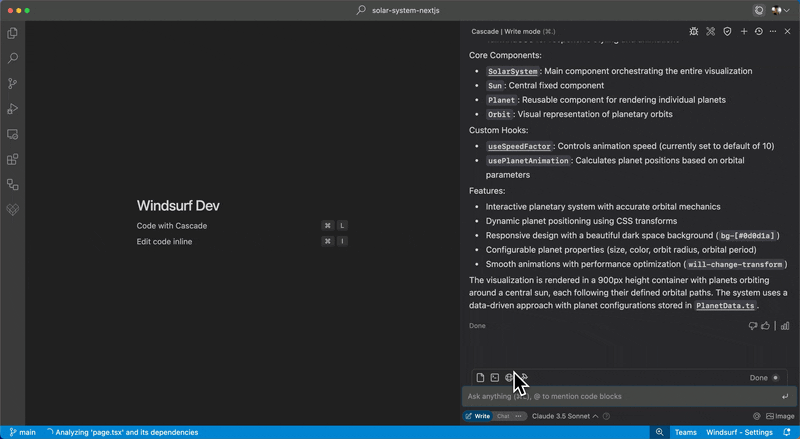
Image/ Windsurf
Undoubtedly, Windsurf's core strength lies in its forward-thinking product positioning: a self-developed AI-native development environment, rather than attaching as a plugin to existing platforms like VS Code and JetBrains.
This means it not only controls the editor's interface and underlying logic but also has the opportunity to reconstruct the entire development workflow, thereby gaining higher product initiative.
In contrast, GitHub Copilot relies heavily on the Microsoft ecosystem, limiting its scalability. While Cursor is powerful, it is still constrained by the original IDE architecture based on VS Code modifications and has not yet been opened up for widespread enterprise use.
From today's perspective, and from OpenAI's viewpoint, Windsurf may not have achieved the same level of popularity as Cursor. However, if the ultimate form of AI programming assistants is for AI and humans to work side by side in the same IDE, Windsurf is likely closer to that end goal.
The Enlightenment of Windsurf Acquisition for Chinese AI Programming Assistants
Windsurf is a crucial pivot for OpenAI in AI programming. Simultaneously, for domestic giants like Alibaba, ByteDance, Baidu, and Tencent, which have already established footprints in the field of AI programming assistants, OpenAI's acquisition of Windsurf will undoubtedly send new shockwaves.
Currently, most domestic AI programming assistants, such as Tongyi Lingma, Wenxin Kuaima, Tencent Cloud Code Assistant, and Doubao MarsCode, adopt a plugin form to access mainstream IDEs like VS Code or Xcode, with functions focusing on code generation, comment completion, test generation, and other scenarios.
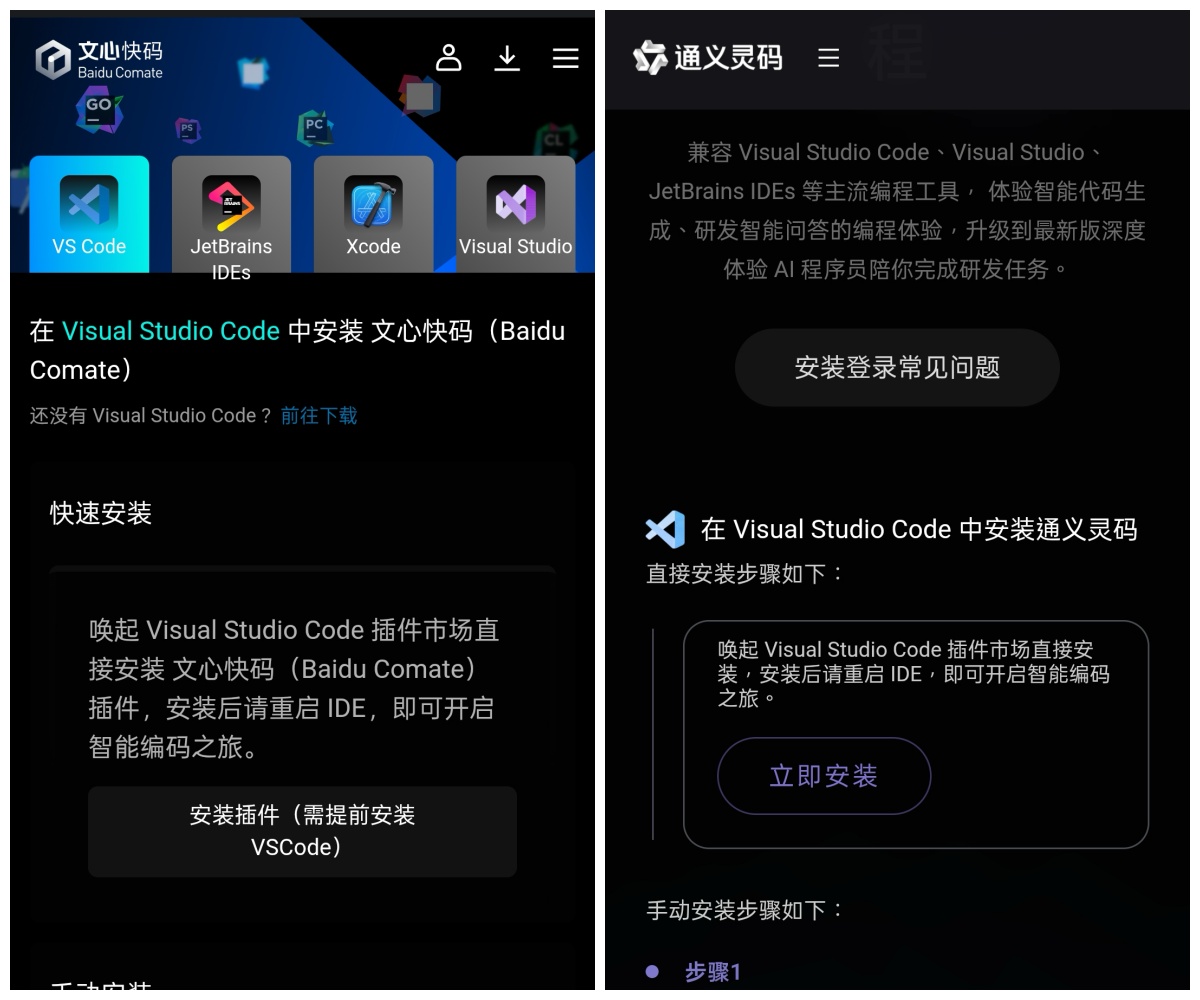
Image/ Baidu, Alibaba
While this plugin-based assistant approach is easy to deploy and quick to get started, its dependence on IDEs means it cannot control the underlying logic and the initiative of the development environment.
In contrast, the "AI-native IDE + agent" route represented by Windsurf transforms the product from a tool component into a main scenario, offering distinct advantages in context awareness, active task execution, and development workflow experience.
However, for domestic manufacturers, this presents both a challenge and an opportunity.
In January this year, ByteDance took the lead by launching an AI-native IDE, Trae, for overseas markets, followed by a domestic version in March. Undoubtedly, Trae's ability to understand Chinese semantics is a significant advantage, making it more user-friendly for Chinese developers.
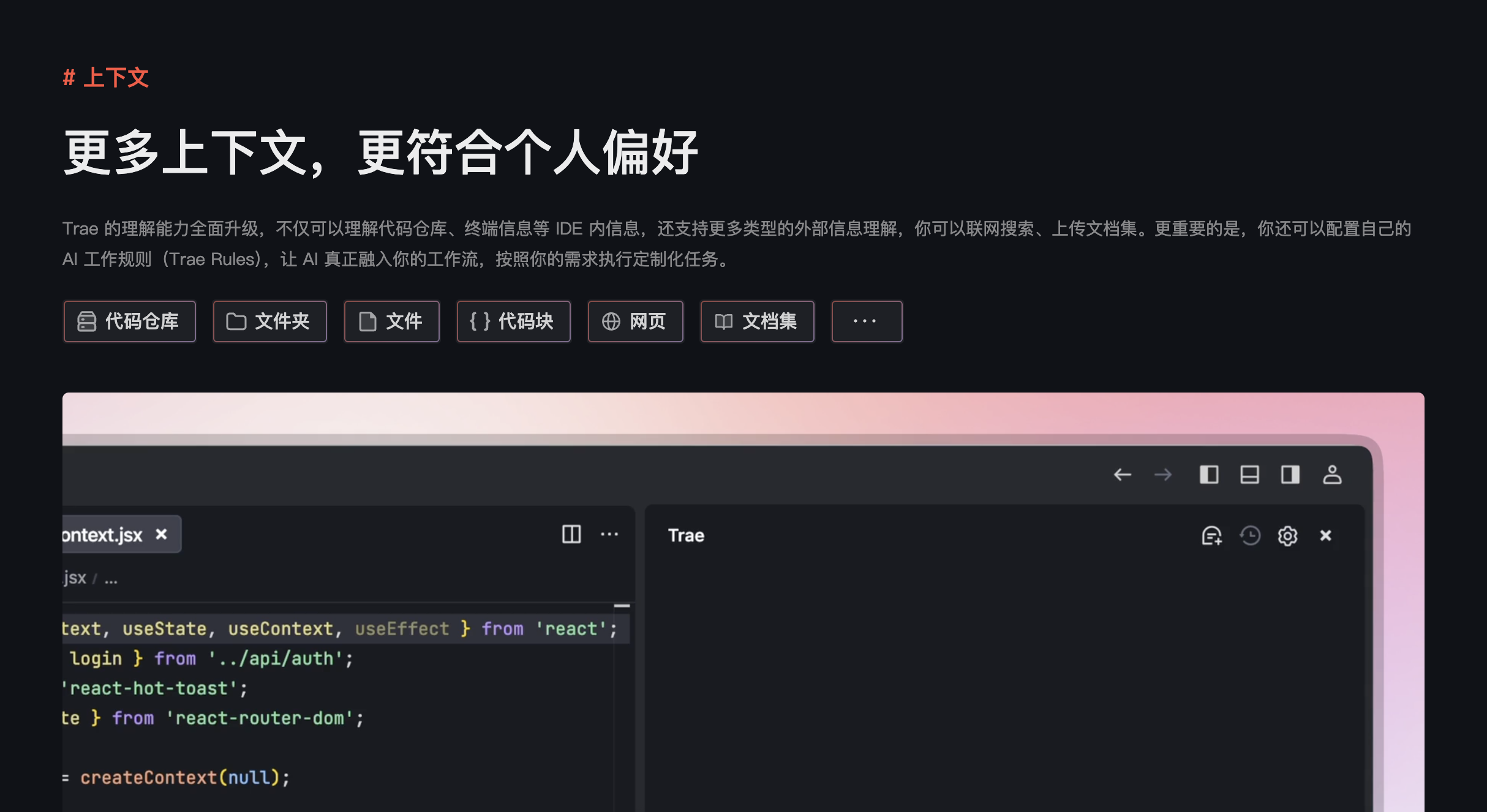
Image/ ByteDance
More importantly, China boasts a vast developer community with growing AI development needs. Once an entry point is identified, it can quickly form a scale effect. On this foundation, if domestic manufacturers can achieve a true sense of "AI workflow reconstruction" – not merely creating a smart plugin but developing an AI collaborator that can deeply collaborate from development to testing, from frontend to backend – then the future represented by Windsurf today is not a proposition beyond Chinese manufacturers' reach.
Written at the End
OpenAI's acquisition of Windsurf is clearly not merely about creating a Copilot replacement but a bet on a new IDE paradigm. From plugins to platforms, from static invocation to active collaboration, the role of AI programming assistants is shifting from "assistance" to "collaboration."
For domestic AI manufacturers, this is both an acceleration race in technological evolution and a breakthrough in product strategy thinking. Is it to continue optimizing plugin experiences and functional details on mainstream IDEs or to take a leap of faith and reconstruct an AI programming platform that is more suitable for them?
The opportunity is there, but the window may not remain open for long. Technology determines the lower limit, and products define the upper limit. Seizing this opportunity hinges not only on technical prowess but also on the courage to choose.
Source: LeiKeJi





